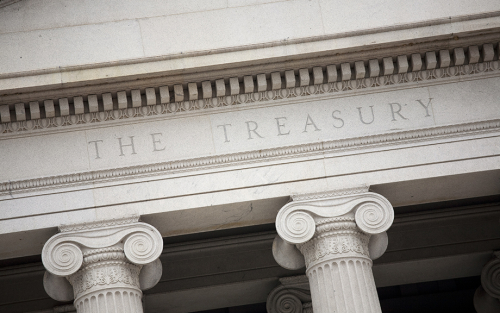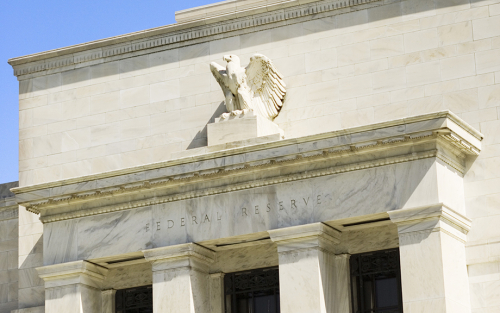At the New York Fed: Fifth Annual Conference on the U.S. Treasury Market

The New York Fed recently co-sponsored the fifth annual Conference on the U.S. Treasury Market with the U.S. Department of the Treasury, the Federal Reserve Board, the U.S. Securities and Exchange Commission, and the U.S. Commodity Futures Trading Commission. This year’s agenda covered a variety of topics, including issues related to LIBOR transition, data transparency and reporting requirements, and market structure and risk.
Since the Financial Crisis, Aggregate Payments Have Co‑moved with Aggregate Reserves. Why?
From the Vault: A Look Back at the October 15, 2014, Flash Rally
Assessing Contagion Risk in a Financial Network

Duarte, Jones, and Ruela describe how stress can propagate through the financial system and sketch out an approach for quantifying economic losses stemming from default cascades.
Ten Years Later—Did QE Work?

By November 2008, the Global Financial Crisis, which originated in the residential housing market and the shadow banking system, had begun to turn into a major recession, spurring the Federal Open Market Committee (FOMC) to initiate what we now refer to as quantitative easing (QE). In this blog post, we draw upon the empirical findings of post-crisis academic research–including our own work–to shed light on the question: Did QE work?
Are New Repo Participants Gaining Ground?

Following the 2007-09 financial crisis, regulations were introduced that increased the cost of entering into repurchase agreements (repo) for bank holding companies (BHC). As a consequence, banks and securities dealers associated with BHCs, a set of firms which dominates the repo market, were predicted to pull back from the market. In this blog post, we examine whether this changed environment allowed new participants, particularly those not subject to the new regulations, to emerge. We find that although new participants have come on the scene and made gains, they remain a small part of the overall repo market.
Deciphering Americans’ Views on Cryptocurrencies

Having witnessed the dramatic rise and fall in the value of cryptocurrencies over the past year, we wanted to learn more about what motivates people to participate in this market. To find out, we included a special set of questions in the May 2018 Survey of Consumer Expectations, a project of the New York Fed’s Center for Microeconomic Data. This blog post summarizes the results of that survey, shedding light on U.S. consumers’ depth of participation in cryptocurrencies and their motives for entering this new market.
Assessing the Price Impact of Treasury Market Workups

The price impact of a trade derives largely from its informational content. The “workup” mechanism, a trading protocol used in the U.S. Treasury securities market, is designed to mitigate the instantaneous price impact of a trade by allowing market participants to trade additional quantities of a security after a buyer and seller first agree on its price. Nevertheless, workup trades are not necessarily free of information. In this post, we assess the role of workups in price discovery, following our recent paper in the Review of Asset Pricing Studies (an earlier version of which was released as a New York Fed staff report).
The Sensitivity of Long‑Term Interest Rates: A Tale of Two Frequencies

The sensitivity of long-term interest rates to short-term interest rates is a central feature of the yield curve. This post, which draws on our Staff Report, shows that long- and short-term rates co-move to a surprising extent at high frequencies (over daily or monthly periods). However, since 2000, they co-move far less at lower frequencies (over six months or a year). We discuss potential explanations for this finding and its implications for the transmission of monetary policy.
Global Trends in Interest Rates

Long-term government bond yields are at their lowest levels of the past 150 years in advanced economies. In this blog post, we argue that this low-interest-rate environment reflects secular global forces that have lowered real interest rates by about two percentage points over the past forty years. The magnitude of this decline has been nearly the same in all advanced economies, since their real interest rates have converged over this period. The key factors behind this development are an increase in demand for safety and liquidity among investors and a slowdown in global economic growth.












 RSS Feed
RSS Feed Follow Liberty Street Economics
Follow Liberty Street Economics